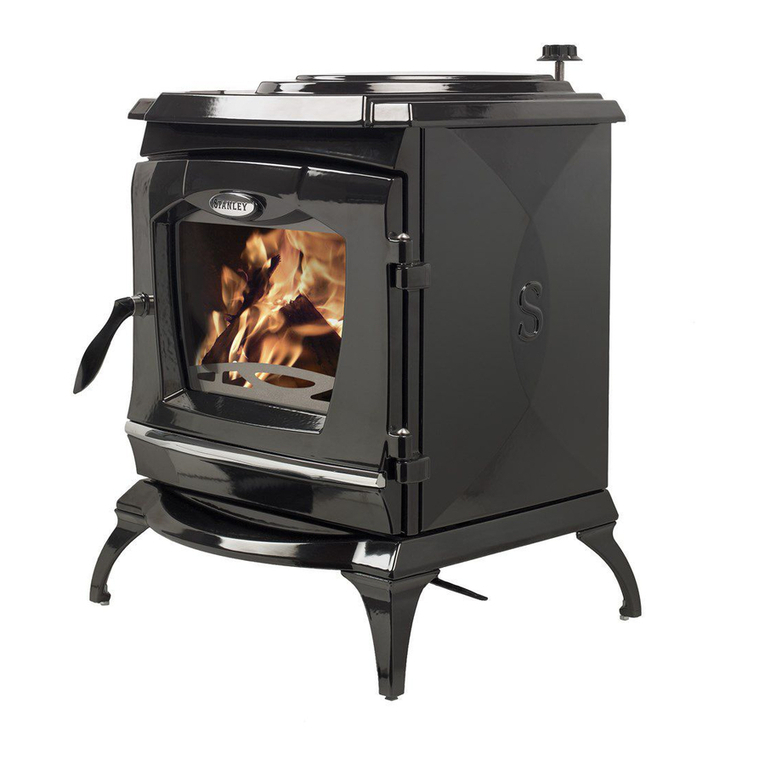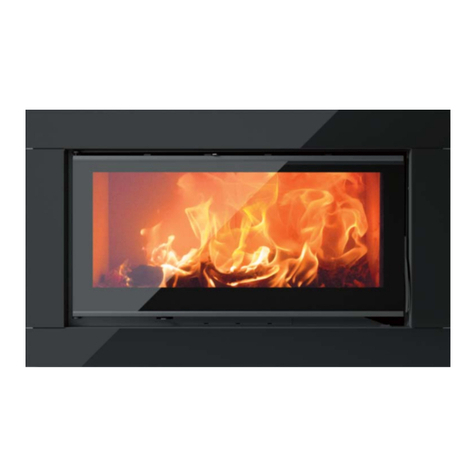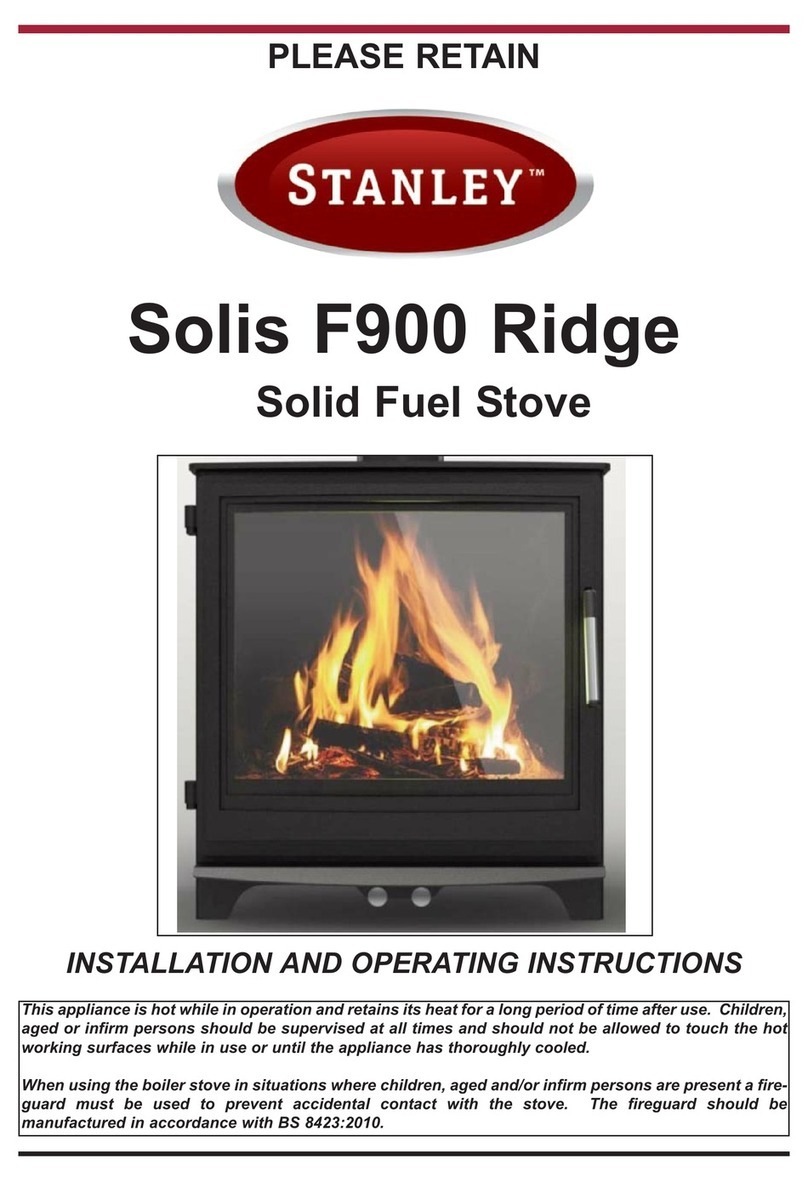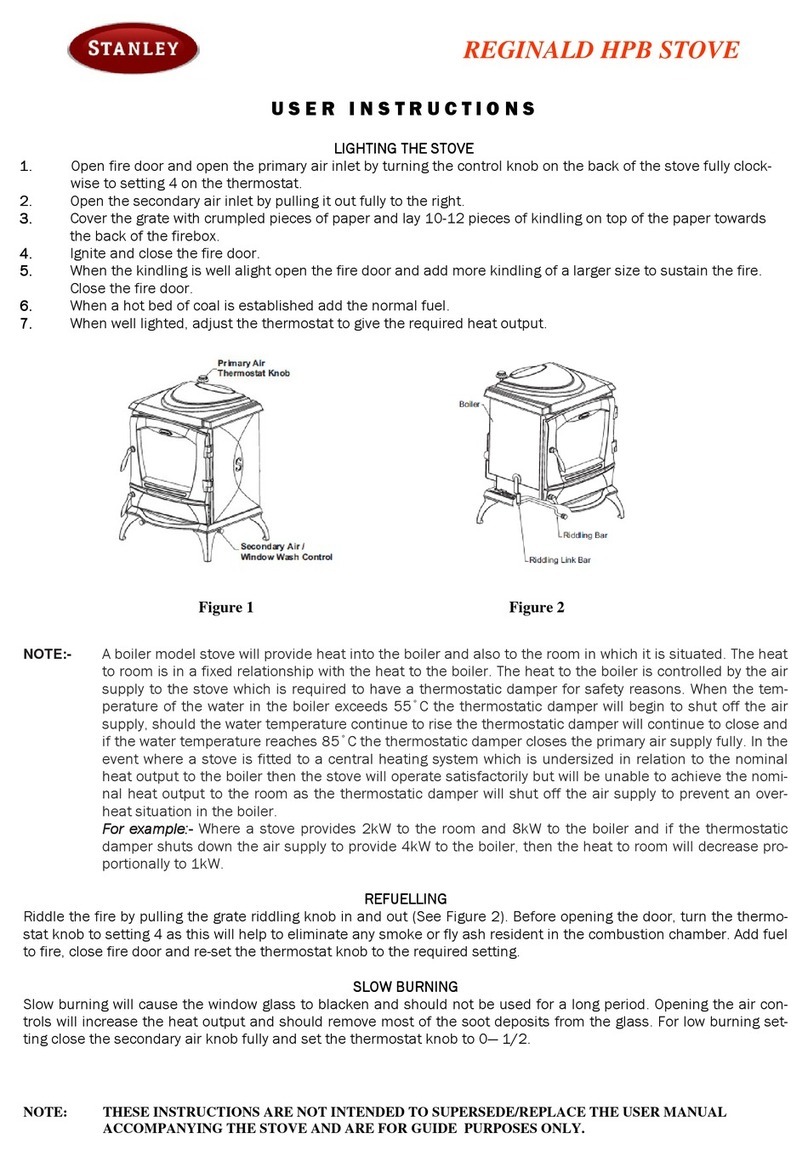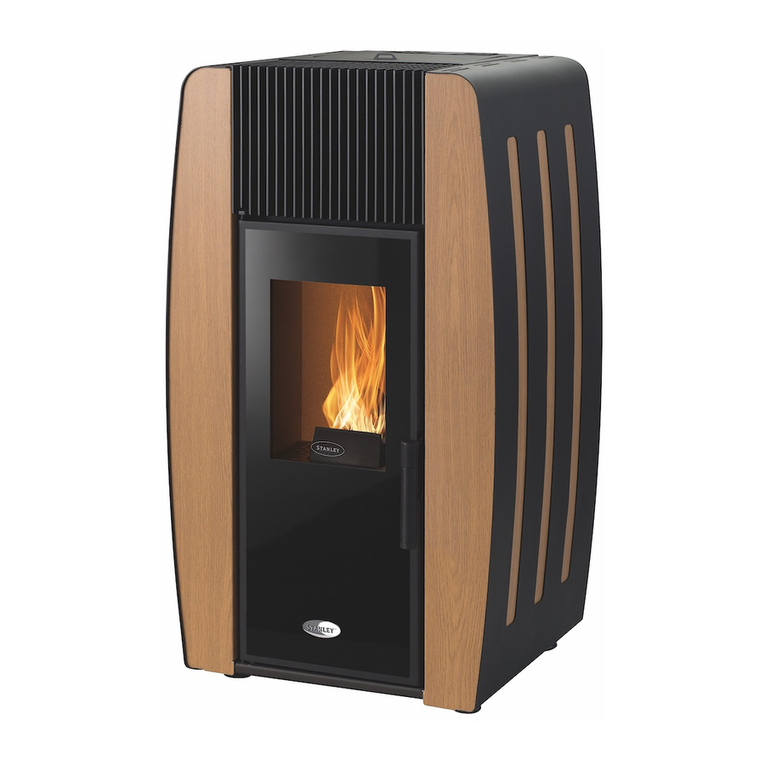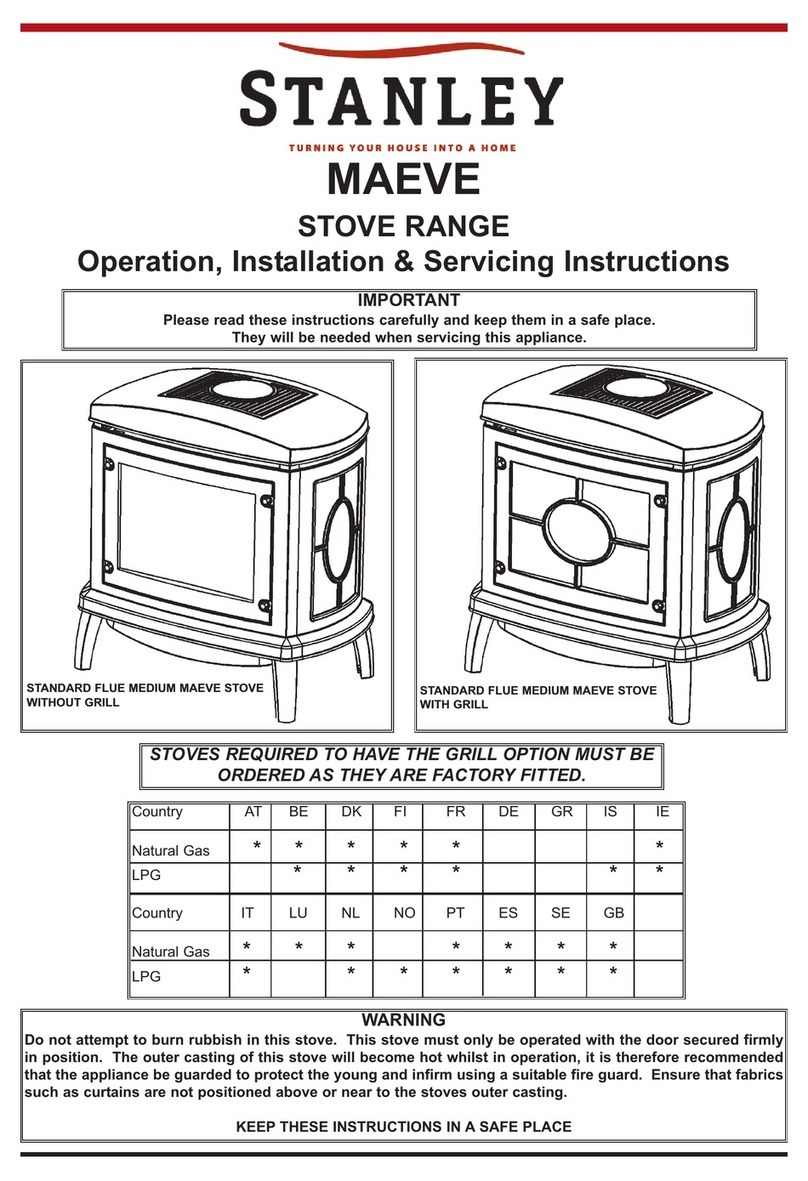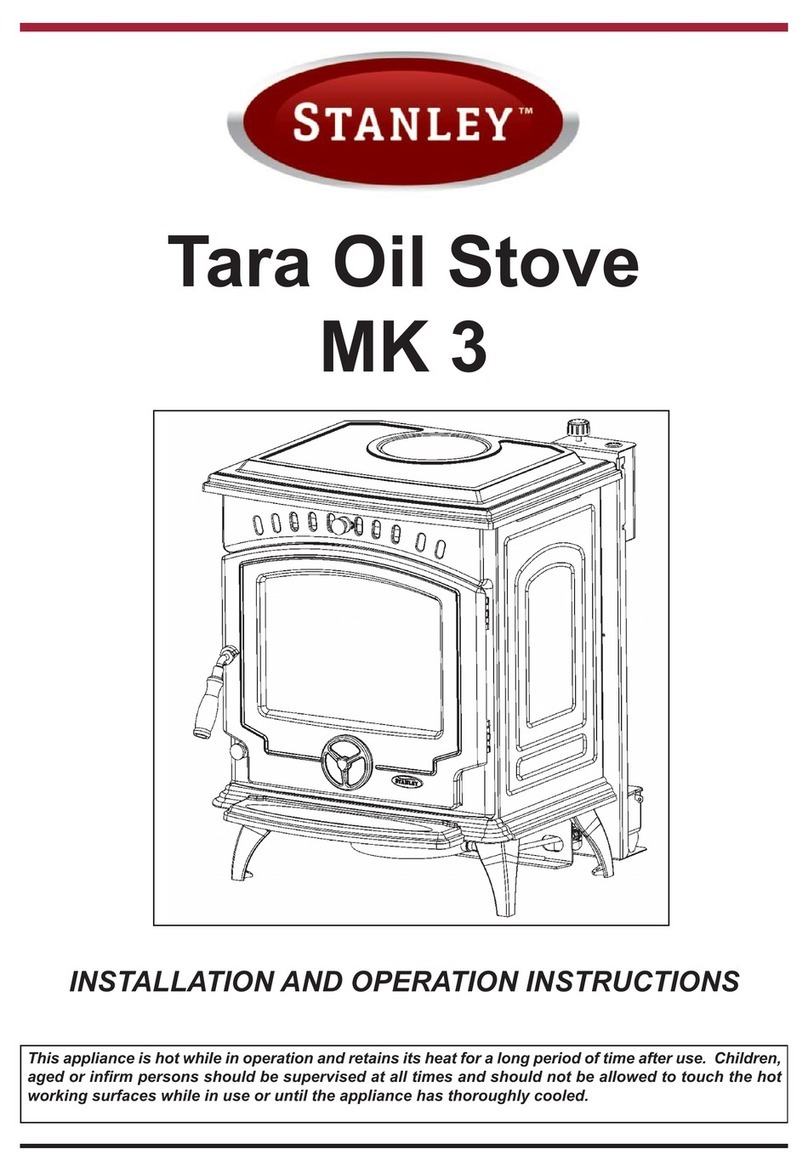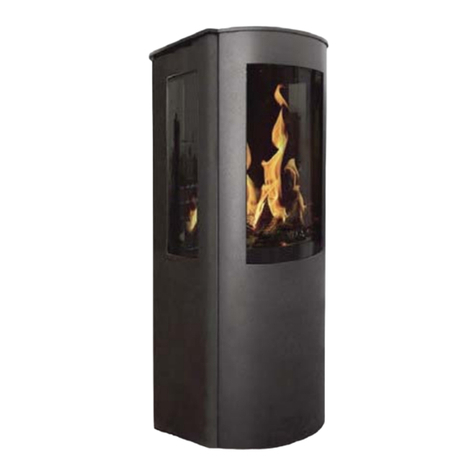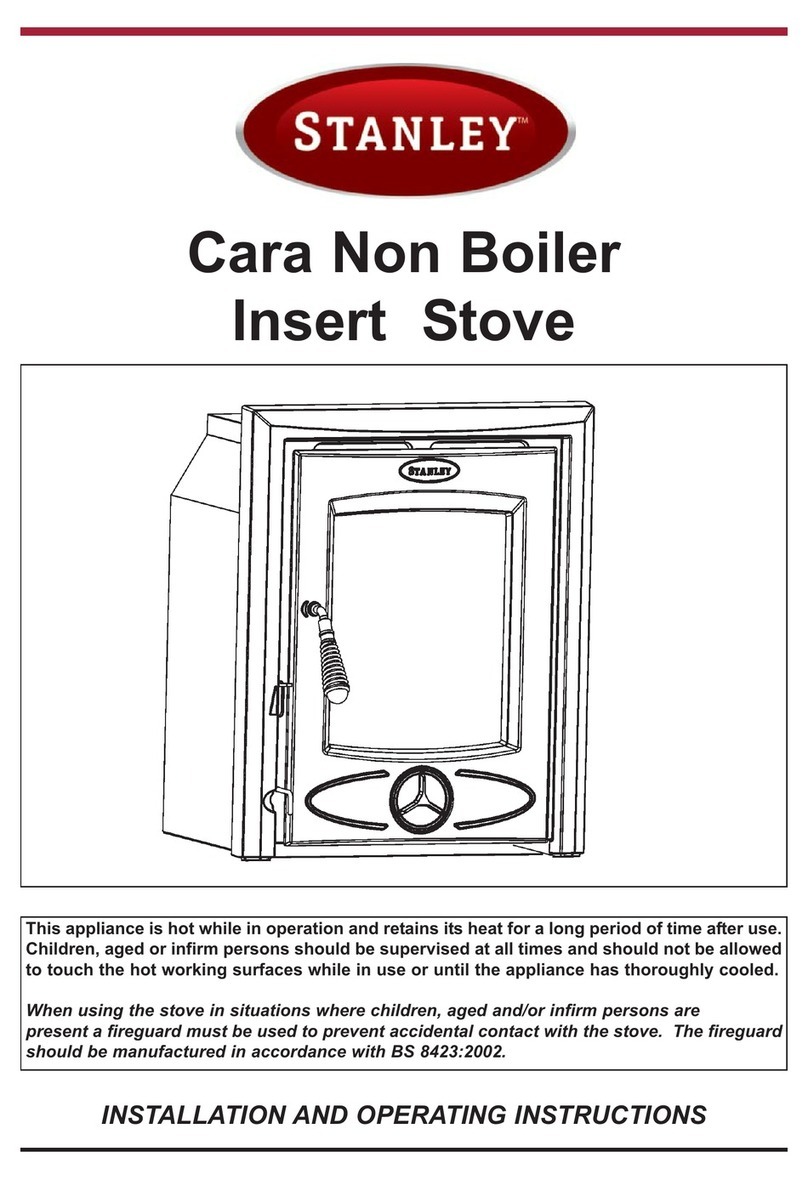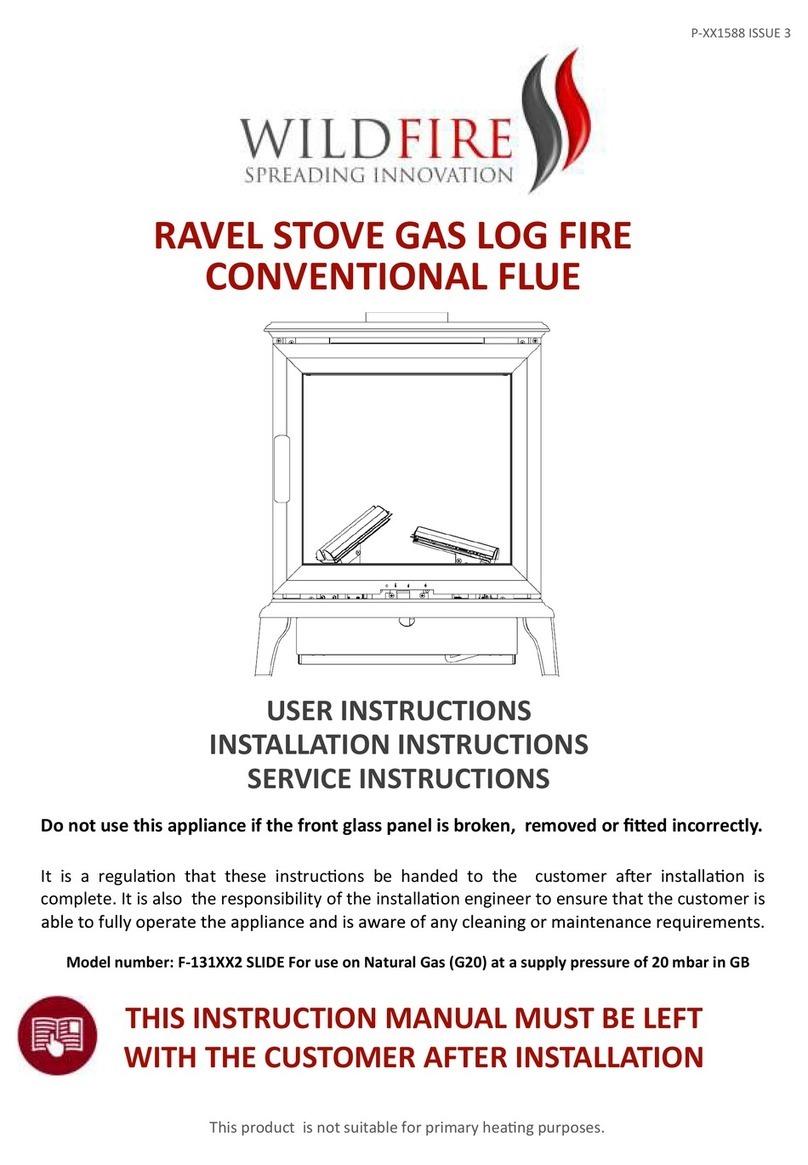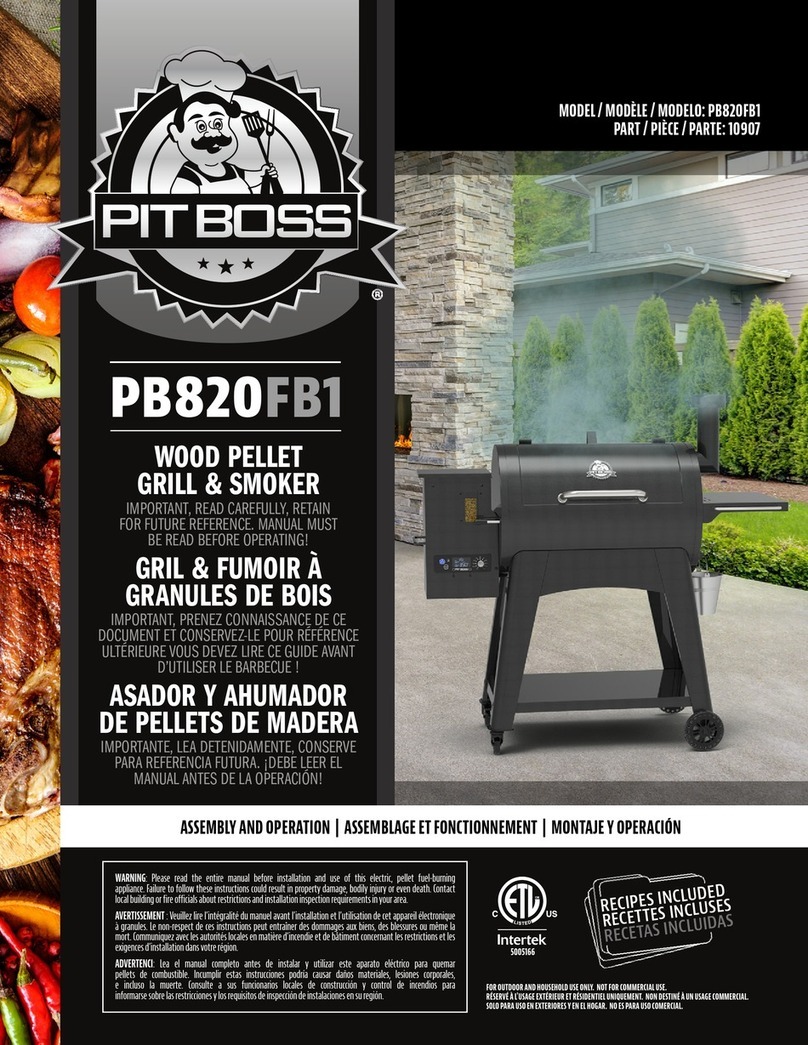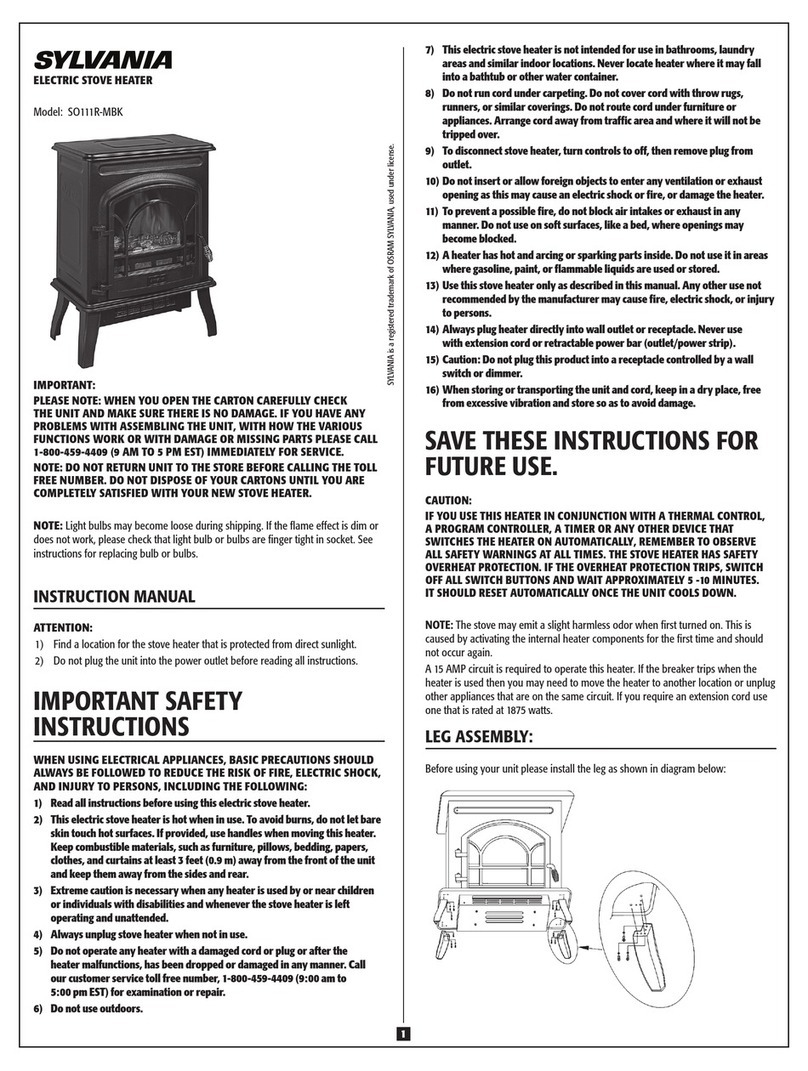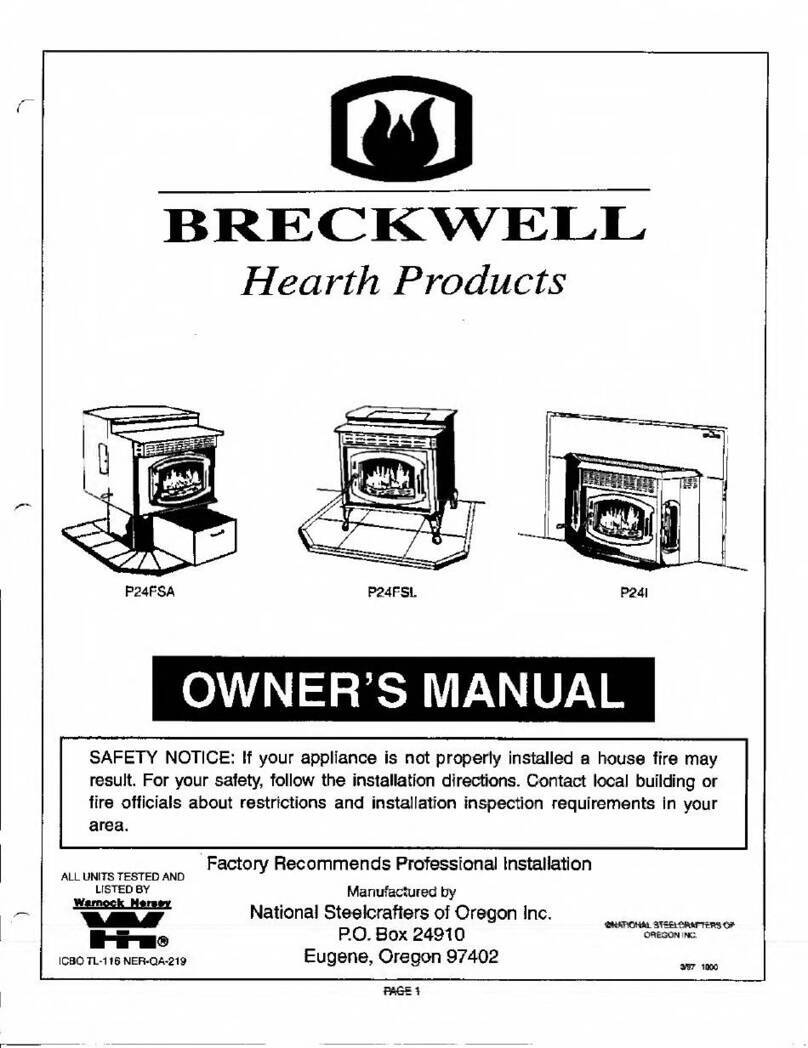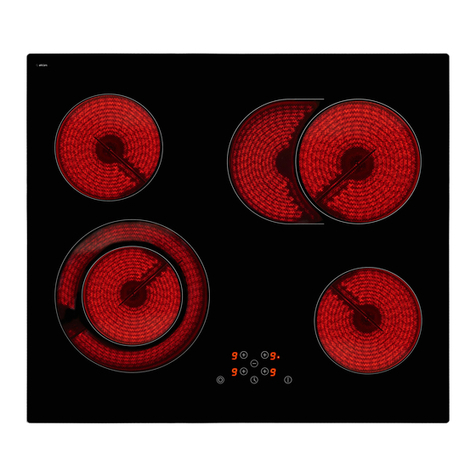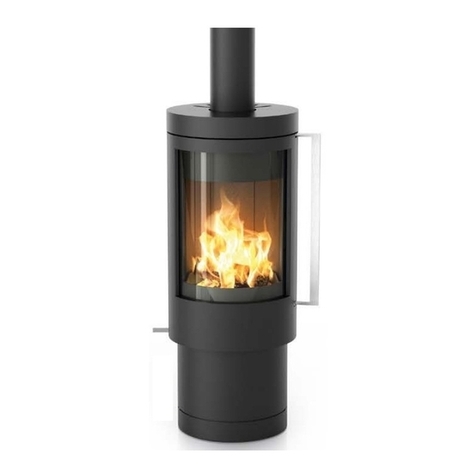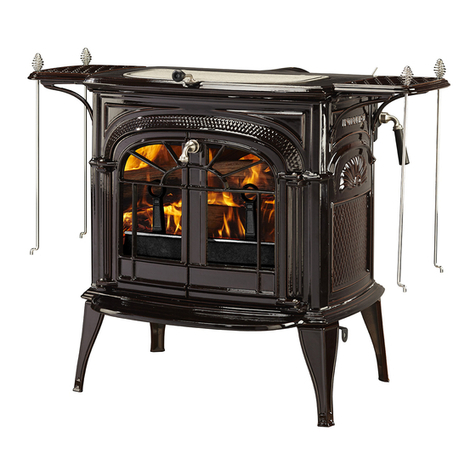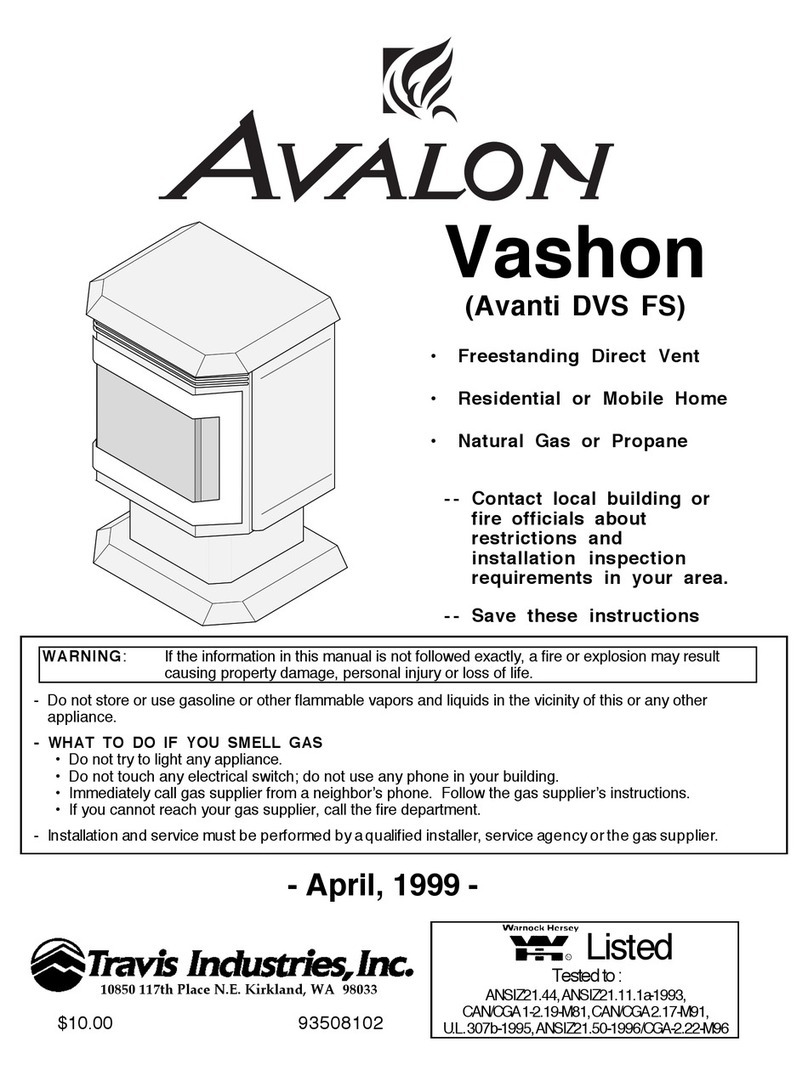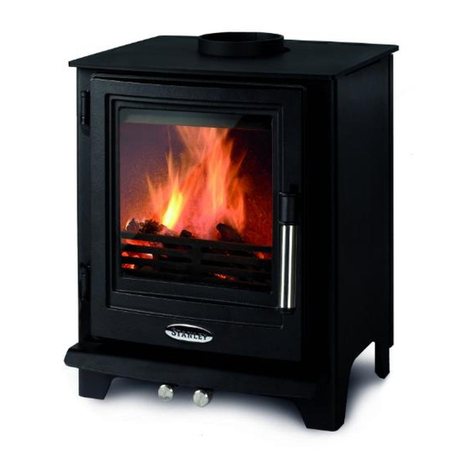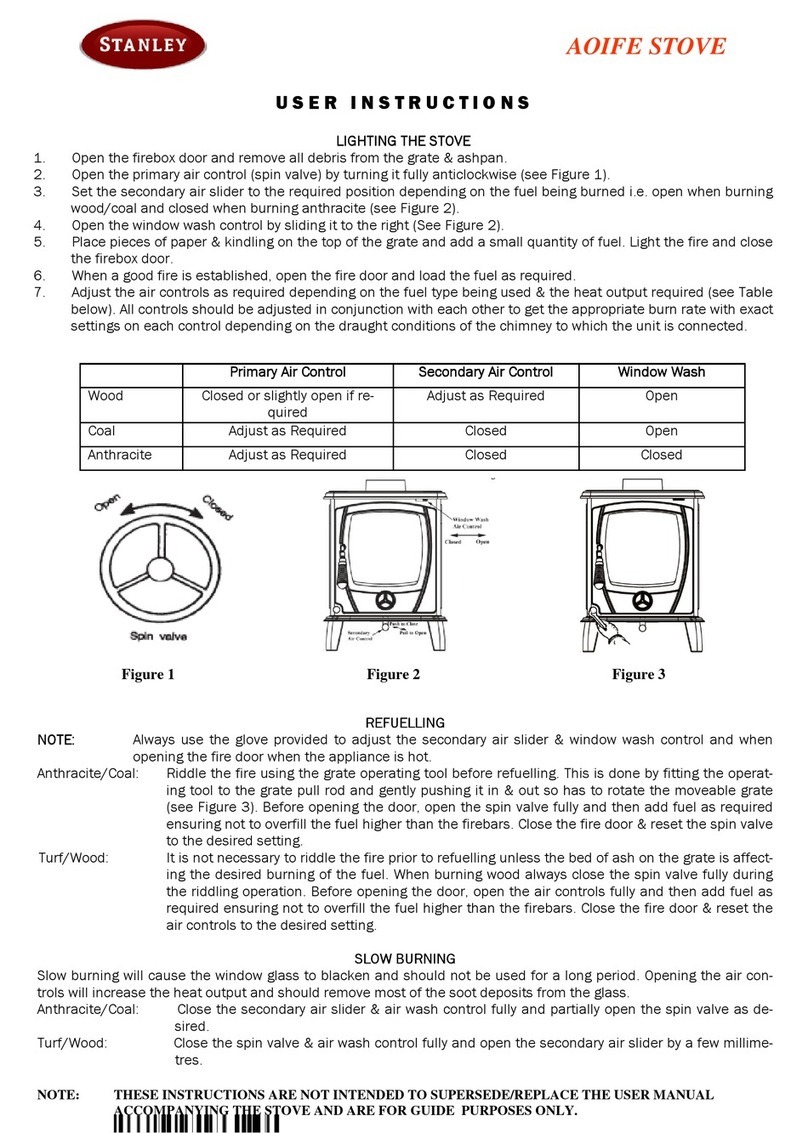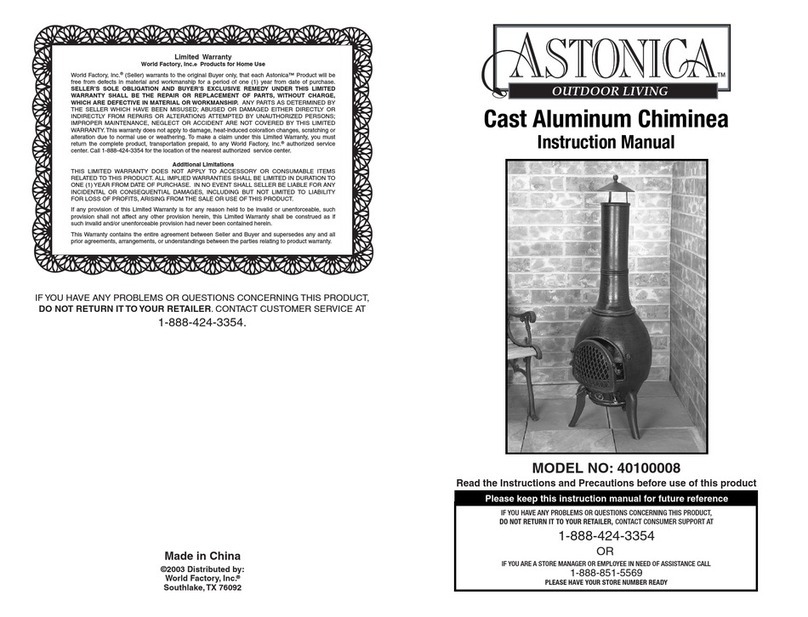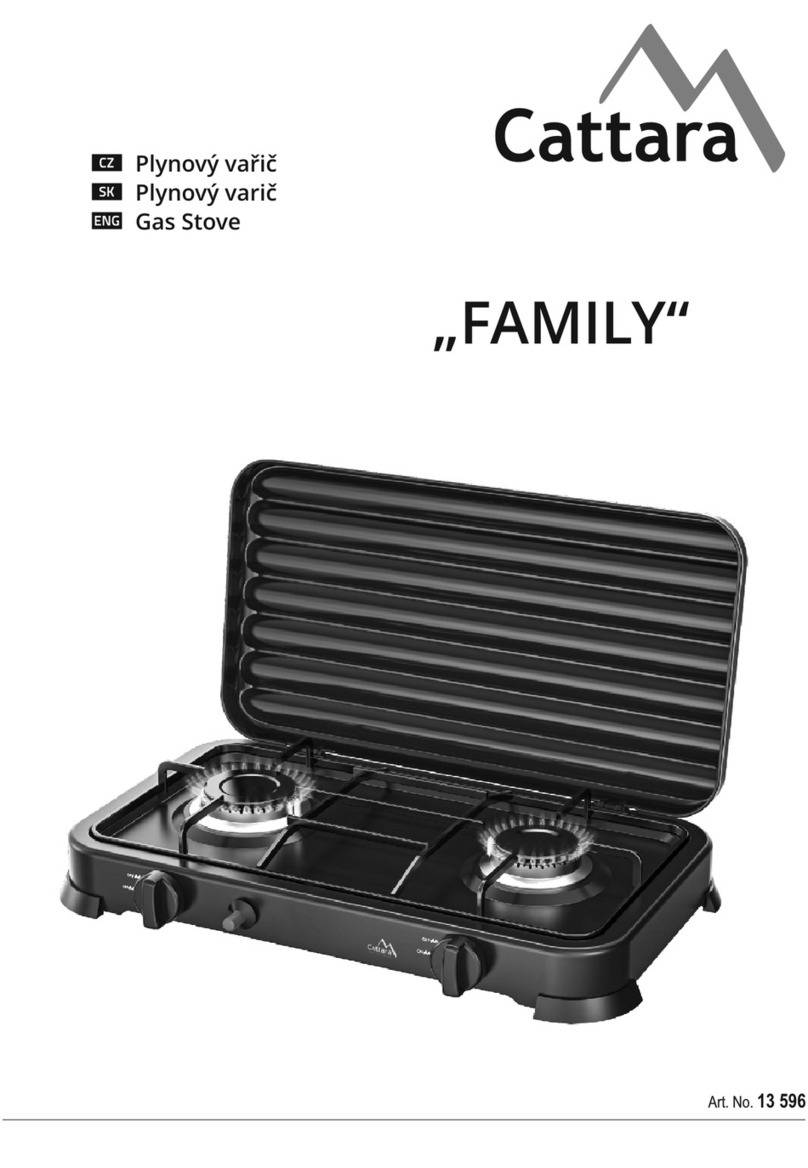10
VENTILATION & COMBUSTION AIR REQUIRE-
MENTS
It is imperative that there is sufficient air supply to
the stove in order to support correct combustion.
The air supply to this appliance must comply with
current Building Regulations Part J, Heat Providing
Appliances. If another appliance is fitted in an adja-
cent room it will be necessary to calculate an addi-
tional air supply.
The minimum effective air requirement for this appli-
ance is 53cm². When calculating combustion air
requirements for this appliance use the following
equation:
550mm² per each kw of rated output above 5kw
should be provided, where a flue draught stabiliser is
used the total free area shall be increased by
300mm² for each kw of rated output.
NOTE:
There must not be an extractor fan fitted in the same
room as the stove as this can cause the stove to
emit smoke and fumes into the room.
All materials used in the manufacture of air vents
should be such that the vent is dimensionally stable,
corrosion resistant, and no provision for closure.
The effective free area of any vent should be ascer-
tained before installation. The effect of any grills
should be allowed for when determining the effective
free area of any vent.
Air vents should be positioned so that they are not
liable to blockage.
Air vents direct to the outside of the building should
be located so that any air current produced will not
pass through normally occupied areas of the room.
An air vent outside the building should not be locat-
ed less than the dimensions specified within the
Building Regulations and B.S. 8303: Part 1 from any
part of any flue terminal. These air vents must also
be satisfactorily fire proofed as per Building
Regulations and B.S. 8303: Part 1.
Air vents in internal walls should not communicate
with bedrooms, bedsits, toilets, bathrooms or rooms
containing a shower. Air vents traversing cavity walls
should include a continuous duct across the cavity.
The duct should be installed in such a manner as not
to impair the weather resistance of the cavity.
Joints between air vents and outside walls should be
sealed to prevent the ingress of moisture. Existing
air vents should be of the correct size and unob-
structed for the appliance in use.
If there is an extraction fan fitted in adjacent rooms
where this appliance is fitted, additional air vents
may be required to alleviate the possibility of
spillage of products of combustion from the appli-
ance/flue while the fan is in operation. Refer to B.S.
8303 Part 1.
Where such an installation exists, a test for spillage
should be made with the fan or fans and other appli-
ances using air in operation at full rate, (i.e.extraction
fans, tumble dryers) with all external doors and win-
dows closed.
If spillage occurs following the above operation, an
additional air vent of sufficient size to prevent this
occurrence should be installed.
Especially Airtight Properties:-
If the stove is being fitted in a property where the
design air permeability is less than 5m3/ (h.m2) (nor-
mally newer properties built from 2006), then a per-
manent ventilation must be fitted to provide 550mm2
of ventilation for each kW of rated output. If a
draught stabiliser is also fitted then the requirement
is 850mm2per kW of rated output.
LOCATION
There are several conditions to be considered in
selecting a location for your Stanley Erin Stove.
a. Position in the area to be heated, central
locations are usually best.
b. Allowances for proper clearances to
combustibles.
c. Allowances for proper clearances for
maintenance work.
CLEARANCE TO COMBUSTIBLES
Maintain at least the following clearances to all
combustible material:
From the front (36”) 910 mm
From the back (35”) 900 mm
From the sides (28”) 700 mm
From the flue pipe (36”) 910 mm
straight up only
It is recommended that this appliance is sited next to
and on a non-combustible surface. A minimum all
round clearance of 150 mm will allow air circulation
and not impede the performance of the stove.

